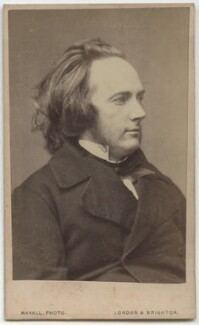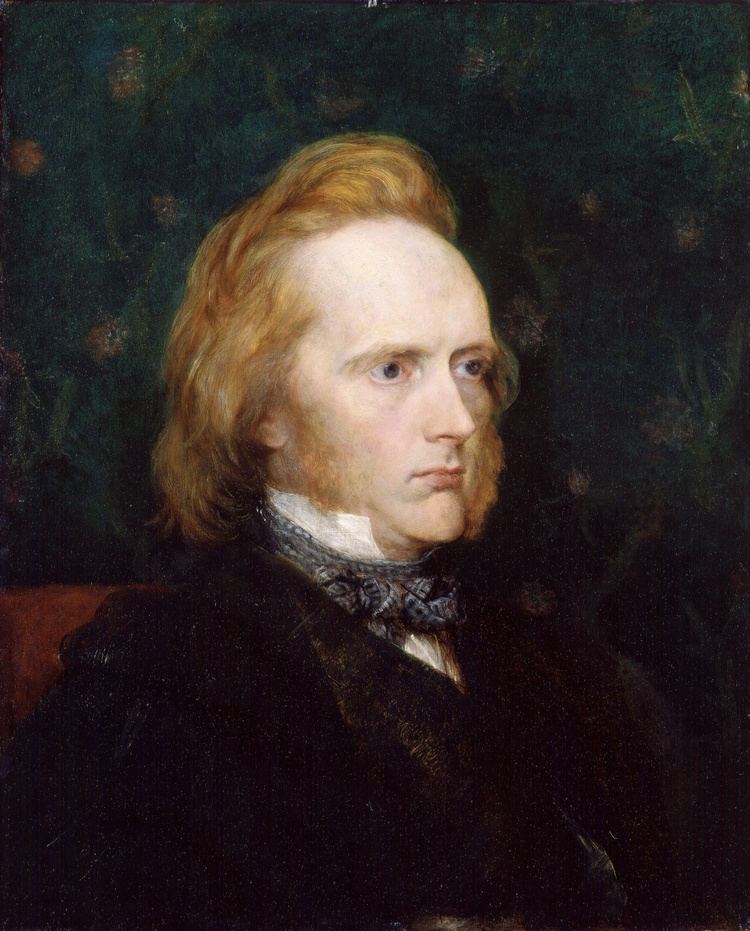Monarch Victoria Role 8th Duke of Argyll Name George 8th | Monarch Victoria | |
 | ||
Prime Minister The Earl of AberdeenThe Viscount Palmerston Preceded by The Marquess of Salisbury Prime Minister The Viscount PalmerstonThe Earl Russell Died April 24, 1900, Inveraray Castle, United Kingdom Spouse Ina McNeill (m. 1895), Amelia Claughton (m. 1881), Elizabeth Campbell, Duchess of Argyll (m. 1844) Children John Campbell, 9th Duke of Argyll Books The Reign of Law, Primeval Man: An Examinati, The Unseen Foundati, The Eastern Question, India Under Dalhousi Similar People John Campbell - 9th Duke, Elizabeth Campbell - Duchess, Princess Louise - Duchess, Henry George, Albert - Prince Consort | ||
Succeeded by The Earl of Harrowby Education University of Edinburgh | ||
George John Douglas Campbell, 8th Duke of Argyll, (30 April 1823 – 24 April 1900), styled Marquess of Lorne until 1847, was a Scottish peer and Liberal politician as well as a writer on science, religion, and the politics of the 19th century.
Contents

Background
Argyll was born at Ardencaple Castle, Dunbartonshire, the second but only surviving son of John Campbell, 7th Duke of Argyll, and his second wife Joan Glassel, the only daughter of John Glassel. Argyll succeeded his father as duke in 1847. With his death he became also hereditary Master of the Household of Scotland and Sheriff of Argyllshire.
Political career
A close associate of Prince Albert, he served as Lord Privy Seal between 1852 and 1855 in the cabinet of Lord Aberdeen, and then as Postmaster General between 1855 and 1858 in Lord Palmerston's first cabinet. He was again Lord Privy Seal between 1859 and 1866 in the second Palmerston administration, and then under Lord Russell's second administration, in which position he was notable as a strong advocate of the Northern cause in the American Civil War.
In William Ewart Gladstone's first government of 1868 to 1874, Argyll became Secretary of State for India, in which role his refusal to promise support against the Russians to the Emir of Afghanistan helped lead to the Second Afghan War. Argyll's wife, née Lady Elizabeth Georgiana Leveson-Gower, also served as Mistress of the Robes in this government. In 1871, while actually serving in the Cabinet, his son and heir, Lord Lorne, married one of Queen Victoria's daughters, Princess Louise, enhancing his status as a leading Grandee.
In 1880 he again served under Gladstone, as Lord Privy Seal, but resigned on 31 March 1881 in protest at Gladstone's Land Bill, claiming it would interfere with the rights of landlords and had been brought in response to terrorism. In 1886, he fully broke with Gladstone over the question of the Prime Minister's support for Irish Home Rule, although he did not join the Liberal Unionist Party, but pursued an independent course. Having been already Vice Lord Lieutenant from 1847, Argyll held the honorary post of Lord Lieutenant of Argyllshire from 1862 until his death in 1900. He was sworn of the Privy Council in 1853, appointed a Knight of the Thistle in 1856 and a Knight of the Garter in 1883. In 1892 he was created Duke of Argyll in the Peerage of the United Kingdom.
Scholarship
Argyll was also a scientist, or at least a publicist on scientific matters, especially evolution and economics. He was a leader in the scholarly opposition against Darwinism (1869, 1884b) and an important economist (1893) and institutionalist (1884a), in which latter capacity he was quite similar to his political opponent, Benjamin Disraeli.
In 1851, he was elected a Fellow of the Royal Society and was appointed Chancellor of the University of St Andrews. Three years later, he became additionally Rector of the University of Glasgow. In 1849 he was elected a Fellow of the Royal Society of Edinburgh and served as its President from 1860 to 1864. In 1866, he was a founding member of the world's first aeronautical society, the Aeronautical Society of Great Britain (later renamed the Royal Aeronautical Society), and served as its President from 1886 to 1895. He was elected a member of the American Antiquarian Society in 1869.
Private life
Argyll was married three times. He married firstly Lady Elizabeth Georgiana Leveson-Gower, eldest daughter of George Sutherland-Leveson-Gower, 2nd Duke of Sutherland, in 1844. They had five sons and seven daughters, being:
The Duchess of Argyll died aged 53 in May 1878. In 1881, Argyll married Amelia Maria (born 1843), daughter of the Right Reverend Thomas Claughton, Bishop of St Albans, and widow of Augustus Anson. She died aged 50 in January 1894. In 1895, Argyll married a third time, to Ina, daughter of Archibald McNeill. Ina survived the duke by a quarter of a century, dying in December 1925. There were no children from either the second or third marriages.
Argyll died at Inveraray Castle in April 1900, six days before his 77th birthday, and is buried at Kilmun Parish Church. He was succeeded in his titles by his eldest son John.
